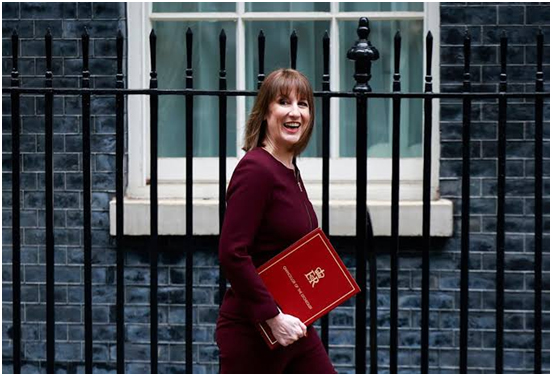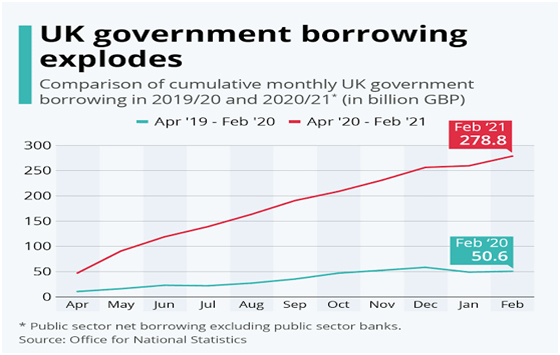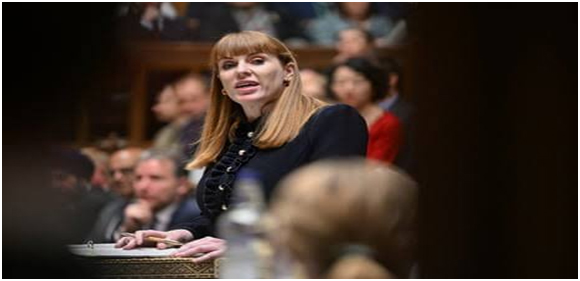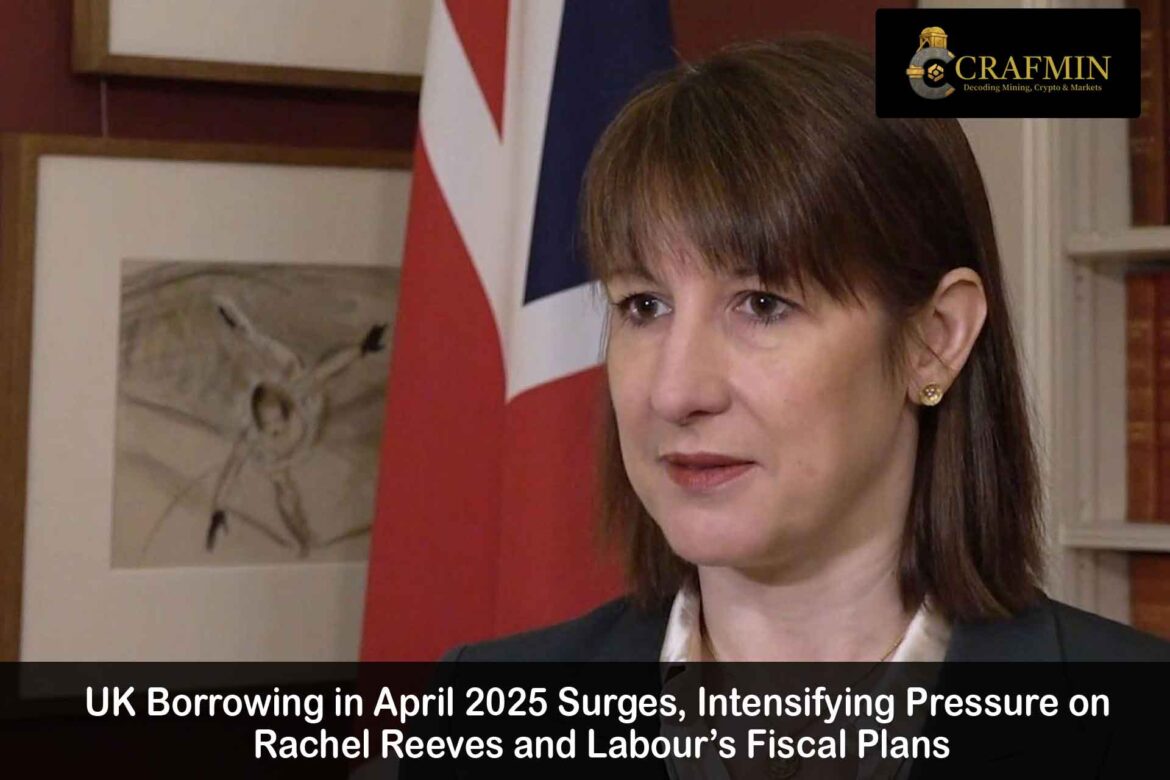The UK government recorded public sector UK borrowing of £20.5 billion in April 2025, the second-highest April figure since records began in 1993, reigniting debate over the country’s fiscal direction under Labour’s economic leadership.
As Chancellor Rachel Reeves prepares for the upcoming spring budget, these borrowing figures raise serious questions about Labour’s strategy on public spending, tax policy, and economic sustainability.

Image 1: Rachel Reeves arriving at HM Treasury ahead of budget talks
Source: Yahoo Finance
ONS Data Highlights Sharp Rise in Borrowing
The Office for National Statistics (ONS) confirmed that UK borrowing was £1.4bn higher than in April 2024, driven largely by increases in welfare spending and interest payments on government debt.
Higher-than-expected social security contributions in the UK 2025 have been offset by inflation-linked bond servicing costs, making the month’s net fiscal position one of the weakest in recent years.
“We are committed to fiscal responsibility, but we will also not walk away from investing in Britain’s future,” Reeves said in a statement following the ONS release.
Rachel Reeves’ Balancing Act: Growth vs Restraint
As Labour’s first full fiscal year unfolds, Rachel Reeves’ fiscal pressure is mounting. Her challenge lies in balancing short-term support for key public services with long-term goals of reducing the debt-to-GDP ratio.
Critics argue that the government’s ambitions around infrastructure, NHS reform, and green energy transition may be undercut by structural borrowing weaknesses.
Yet Labour insists its fiscal policy will be guided by “discipline and delivery.”

Image 2: Graph comparing UK public sector borrowing across April months
Source: Statista
Angela Rayner and the Wealth Tax Push
Amid the UK borrowing headlines, Deputy Leader Angela Rayner has revived calls for a wealth tax targeting Britain’s highest earners and large asset holders. The move would represent a significant shift in Labour tax and welfare policy, aligning with continental European approaches to wealth distribution.
Reeves has so far been cautious, stopping short of endorsing direct wealth levies but leaving the door open for broader tax reform in the Rachel Reeves spring budget.

Image 3: Angela Rayner at a Labour economic justice rally
Source: The Guardian Photo Archive
Public Finances in Context: A Post-Austerity Reckoning
The April 2025 numbers arrive at a time when the UK’s borrowing fiscal foundations are under review. Years of post-pandemic support, inflationary shocks, and Brexit trade adjustments have added pressure on government coffers.
According to the UK economic outlook April 2025, growth remains fragile and productivity gains elusive—forcing the government to lean on borrowing just as bond markets grow wary of inflation resilience.
Markets have so far remained steady, but any sign of fiscal slippage could spark higher borrowing costs and tighter monetary conditions, complicating the UK fiscal strategy Labour hopes to stabilise.
Spring Budget Preview: Spending Promises Under Scrutiny
With the spring budget due in early June, all eyes are on how Reeves plans to address the shortfall. Analysts expect a mix of targeted spending cuts, modest tax adjustments, and optimistic growth projections.
Yet several think tanks warn that unless structural reforms are enacted—particularly in pensions, healthcare, and tax code efficiency—UK public finances may continue to underperform against forecasts.
The Resolution Foundation noted that “April’s data is a warning shot. Borrowing may be sustainable in the short term, but fiscal credibility will soon hinge on tough choices.”
Political Reaction and Future Challenges
The Conservative opposition was quick to seize on the figures, accusing Labour of “reckless over-promising.” Shadow Chancellor Jeremy Hunt said, “This is not just a fiscal hiccup—it’s a sign of a government that’s losing control of its balance sheet.”
Meanwhile, the ONS UK borrowing deficit update shows public sector net debt hovering around 96.5% of GDP, near post-WWII highs.
Reeves has emphasised that Labour remains committed to responsible financial management, aiming for stability through reform rather than deep spending cuts.
[Also Read – UK Gulf Trade Pact 2025: Rachel Reeves Charts New Post-Brexit Path Amid Economic Rebalancing]
Conclusion: A Defining Fiscal Year for Labour
The UK borrowing figures underscore the difficult terrain facing Rachel Reeves as she shapes Labour’s economic narrative.
Caught between rising public expectations and growing fiscal risks, Reeves must now walk a fine line—projecting competence, ensuring credibility, and delivering impact.
As Britain enters a new political and economic era, the pressure on its public finances could determine not just the success of Labour’s economic vision—but the country’s broader post-Brexit recovery story.

